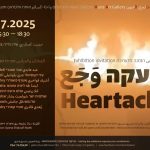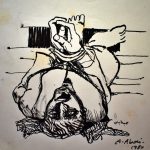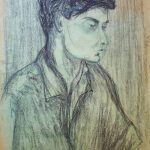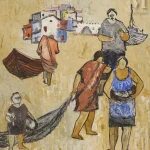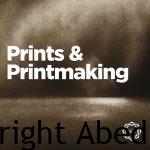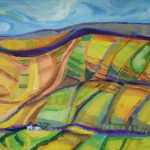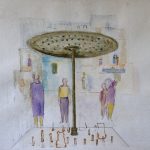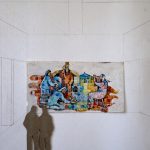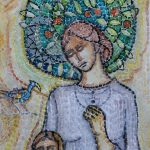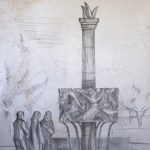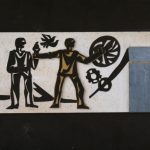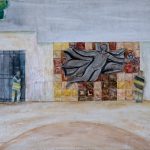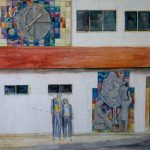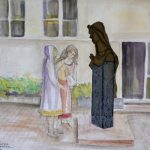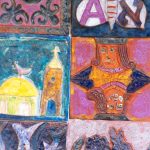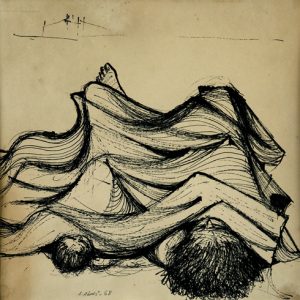
There are those who claim that early years of an artist’s life are the ones that leave their imprint on his creative productivity and accompany him throughput his life. In Intensive tempo childhood images return and emerge, forms and lines are coupled to a subject which pursues the artist again and again, revealing periods of cessation (periods spent studying outside his native land, or perhaps voluntary exile?). But the artist’s truth is reflected in the frequency of his subjects which he endavours to recreate through renewed means of expresion. Chagal’s VITEBSK and Picasso’s GUERNICA are proof of this.
Haifa is the city of ABED ABDI’s birth. When he was six years old a large segment of the city’s Arab inhabitants fell victim to the ferocious war which flared between two nationalities. The abandoned Arab quartes, and those that where devoured by the bulldozer are permanent background to the artist’s subject.
Abed dwells in the abandoned wadis of Haifa, and in the fate of his people who left behind them a vaccum, and began a life of destitution and wandering which has not stopped to this day – as blots of vlack, zigzag lines and bent shadows which entwine ithin the pleats of the Kafiya (Arab head dress) and the folds of the striped Kombas (Arab dress) . Do we ever forget Yousef? And why should Abed forget Ahmad, Tawfiq and Kassem, Samira and Hagar?
The litographs and drawings of Abed cry out in their silence, the silence of a woman with a Kafiya closing about her mouth. It is no merre coincidence that there are three orphans in the shadow of the moon, a mother and child sheltered by the sky next to an abandoned village. Figures with raised hands behind a wire fnce, a face with a frozen tear – is this the end? Groups waving their hands inspire the question – Is there no sign of hope ?
One series of litographs and drawings screams out – it was executed abroad, in East Germany, where Abed studied for seven unblemished years (the seven good years?).
There, in monumental creativity, he drew and executed litographs. He did not loose his national identity – this series stands as proof and documentation. Perhaps this constitutes a decisive reply to those who claim that art in the twentieth century is universal.
in: Abed Adbi, Drawing (Refugees Album) 1973


